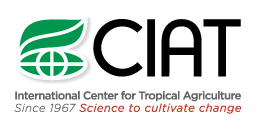Deforestation monitoring system goes global
After several years monitoring the forests of Latin America, Terra-i – the eye in the sky – is now expanding its vision to cover the tropical forests of Africa and Asia.
The CIAT-developed system uses satellite images and a lot of number crunching to track deforestation. Updated every 16 days, it can distinguish between recent and historical deforestation back to 2004, giving a frighteningly accurate story of forest clearance.
Terra-i has already been adopted by the Peruvian government as its official deforestation early warning system in the country’s share of the Amazon rainforest.
New year new data!
— Terra-i (@terrai_ciat) January 13, 2016
Terra-i data reaching new horizons in the east side of the globehttps://t.co/VrSzUinNva @CIAT_ pic.twitter.com/9n3TppGDm8
The Amazon rainforest is often described as the lungs of the Earth, but the forests of the Congo Basin, Malaysia and Indonesia are some of the most diverse and important in the world, and they’re also facing enormous pressure. The launch of Terra-i in Africa and SE Asia will enable policymakers to see exactly where the hotspots are and how they are changing. In turn, that information can help them develop stronger policies for forest conservation.
Louis ReymondinIf you can’t measure it, you can’t manage it
As well as revealing the magnitude of deforestation, the information generated by Terra-i can also be used to quantify the enormous carbon dioxide emissions generated by forest clearance. This information in turn can help governments and the private sector put a price on forest conservation.
The expansion of Terra-i to the tropical forests of Asia and Africa comes right on cue. Given that countries have committed to emissions reductions as a result of the COP21 Paris Agreement, it is timely to give a more accurate idea of the extent of emissions, and how gains could be made through reforestation or avoided deforestation.
Lisette Phelan
A villager standing with cleared landed in the background. East Kalimantan, Indonesia. Photo by Moses Ceaser for Center for International Forestry Research (CIFOR).
Lisette says the information generated by Terra-i can also help private sector companies assess the environmental impact of their activities, which in turn can feed into their corporate social responsibility programs. This could lead to to smallholder farmers receiving payments in exchange for protecting the forests.
*
Terra-i is the result of years of collaboration between CIAT, Kings College London and the University of Applied Sciences of Western Switzerland (HEIG-VD). It is funded by The Nature Conservancy, The World Resources Institute, Global Forest Watch and the CGIAR Research Program on FTA.
Maps can be found online at www.terra-i.org and offline on tablets or smartphones at http://geodata.policysupport.org/terra-i.

